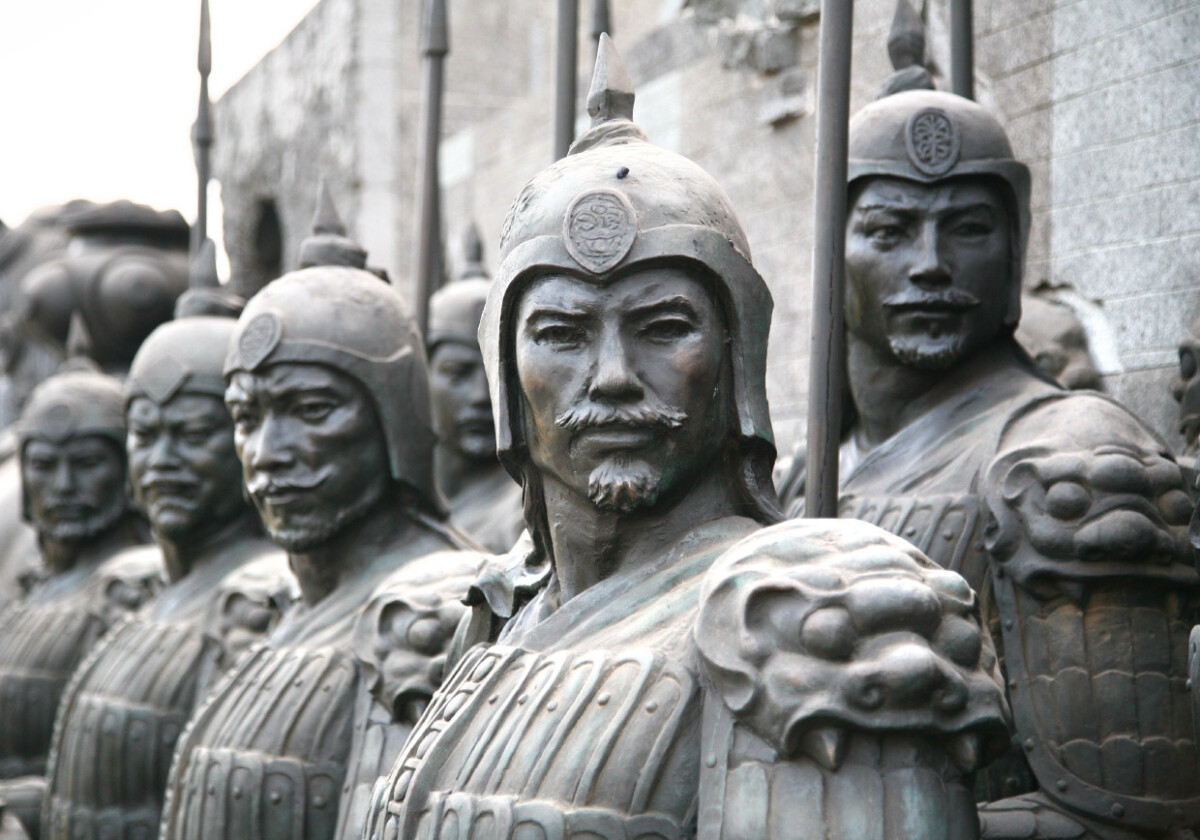For Clues about Asia’s Future Diplomacy, Look to the Past
PDF Version
Lt Col John Wright , USAF | Feb 4th 2022

The recent Chinese state reaction to the outburst of violence on 2 January in Kazakhstan was curious—not only for its relative belatedness (nearly five days after the riots began) but also strange for its tone-deaf description of the riots, comparing them to the color revolutions that occurred previously in Eastern Europe and Hong Kong. Despite the fact that the disorder in Kazakhstan is clearly not a color revolution and has deep-rooted origins in long-standing domestic economic and social discontent, China involved itself anyway in a region where there is no discernable Chinese influence nor reasonable interest beyond basic economic ones, and where other major regional powers—like India and Russia—have clearly articulated their high-stakes interests already.
The reasons China involved itself have striking resemblances to the world of the nineteenth century. While China’s statements and behavior this time may seem relatively new, it is certainly not new historically. The reasons why China spoke up in the first place—and why Chinese comments took the form they did—lie in Beijing’s fear of so-called Western-backed color revolutions to be sure but also in Asia’s political legacy, specifically from the nineteenth century. This legacy is worth re-examining to help understand how indopacific players could react to future events.
The nineteenth century in Asia was an age dominated by global European interests. It effectively transplanted to Asia the idea of involving one’s country in your neighbor’s interests by the mere threat of future involvement, best represented by that century’s novel inventions that tended to force one to drop what they were doing and pay attention: gunboat diplomacy, ultimatums, and unequal treaties, to name a few. These were techniques Asian states were largely unaccustomed to seeing; Korea, Japan, and China all took their turn as recipients of these policies, which came with irreversible consequences. By our modern standards, nineteenth-century diplomatic norms can be difficult to understand but are incredibly consequential for contemporary diplomacy. Diplomatic congresses (mass gatherings of great powers who met to carve up the world at their whim), spheres of influence, massive technological changes on the battlefield, and national pride—which could and did provide the impetus to start wars all on its own—have all left their imprint on our contemporary indopacific.
Many nineteenth-century traditions forcibly imported into the indopacific enhanced already-existing Asian tendencies toward authoritarian control. For example, the feudal tradition of state monarchs and elites owning a country’s entire decision-making process and armed forces as their personal possession, which did not begin to disappear in Europe until 1918, fit rather nicely into existing national traditions found in the indopacific. As the colonizers began to fade away in the twentieth century, their nineteenth-century techniques remained behind, and tools like gunboat diplomacy and the idea of threatening involvement to influence a neighbor’s domestic decision-making were happily embraced by indigenous heirs. Even the two explosive wars in the twentieth century that rocked the indopacific could not prevent the nineteenth-century chickens from coming home to roost.
These nineteenth-century inventions and traditions hold great significance for today’s indopacific. Contemporary Asian diplomacy exhibits clear reflections of this previous age. Nationalism still stomps around the region and can be seen wherever one travels, from the humblest street corner flying a national flag to the panoply and rivalry on display at the Olympic games, which are beginning to appear in Asia with more regularity. National pride is all the rage in both Russia and China, and most readers are well-acquainted with the legions of internet trolls who are deployed to swirl around and suitably manicure and polish controversies whenever a bit of nationalist flavor is needed. Spheres of influence are back with a vengeance; while many scholars do not wish to discuss relationships in these terms, especially Western ones, it is difficult to see things otherwise when one examines how Russia and China diplomatically engage with nearby states. China has even embarked upon a clear policy of gunboat diplomacy, a hallmark of the nineteenth century that can be very effective in the right circumstances.
In particular, though certainly not alone in the indopacific, Chinese and Russian actions and reactions to events could be taken out of nineteenth-century playbooks. It is clear both states favor power politics through classic realist—dare we say nineteenth-century Great Power—lenses. Nefarious foreign influences are frequently blamed for the smallest of problems, a-la pre–World War I Austrian focus on Balkan saboteurs and malcontents who seemed to lurk around each Budapest street corner. China’s focus on the perceived ethnic angle of the so-called “Century of Humiliation,” which also happens to have started in the nineteenth, have fed nationalist flames. Efforts to blame neighbors—from India to Georgia to Ukraine—for making conflicts necessary sound suspiciously like Prussian general Helmuth von Moltke’s 1890s proposals for “preventative war.” Everything sounds awfully familiar, and no one put it better than the nineteenth century’s own Karl Marx: “history repeats itself, first as tragedy, then as farce.”
For better or worse, today’s indopacific diplomatic structures are built upon nineteenth-century foundations, largely brought to Asia from abroad but then happily assimilated. Analysts should take heed; by considering Asian diplomacy through the lens of European-forged nineteenth-century political norms—power politics, balancing, hedging, spheres of influence, gunboat diplomacy, high-octane state rhetoric, and war built upon national mood and honor—we can better understand how indopacific players act the way they do, and what is to come in the future.
Lt Col John Wright , USAF
Lieutenant Colonel Wright is a US Air Force officer and a Mike and Maureen Mansfield Fellow. He is a Foreign Area Officer who specializes in the INDOPACOM theater and author of the book Deep Space Warfare: Military Strategy Beyond Orbit. The views expressed in this article are solely those of the author and not necessarily those of the US Air Force, US government, Mansfield Foundation, or any other government or government entity.